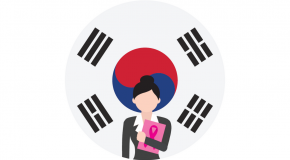Healthcare perspectives from The Economist Intelligence Unit
A silent killer in Saudi Arabia: Male cancers
Male cancers, including prostate, testicular and penile cancer, were not among the top health concerns in Saudi Arabia until recently. “Prostate cancer is the number one cancer amongst men in most Western countries, but that hadn’t been the case in Saudi Arabia; it had been number five but now it is number two [among men over the age of 60],” explains Danny Rabah, professor of surgery and head of the division of urology at King Khalid University Hospital in Riyadh.
17202
Related content

Value-based healthcare in Sweden: Reaching the next level
The need to get better value from healthcare investment has never been more important as ageing populations and increasing numbers of people with multiple chronic conditions force governments to make limited financial resources go further.
These pressures, along with a greater focus on patient-centred care, have raised the profile of VBHC, especially in European healthcare systems. Sweden, with its highly comprehensive and egalitarian healthcare system, has been a leader in implementing VBHC from the beginning, a fact that was underscored in a 2016 global assessment of VBHC published by The Economist Intelligence Unit.
This paper looks at the ways in which Sweden has implemented VBHC, the areas in which it has faced obstacles and the lessons that it can teach other countries and health systems looking to improve the value of their own healthcare investments.

Breast cancer patients and survivors in the Asia-Pacific workforce
With more older women also working, how will the rising trend of breast cancer survivorship manifest in workplace policies, practices and culture? What challenges do breast cancer survivors face when trying to reintegrate into the workforce, or to continue working during treatment? How can governments, companies and society at large play a constructive role?
This series of reports looks at the situation for breast cancer survivors in Australia, New Zealand and South Korea. It finds that while progress has been made, more needs to be done, particularly in South Korea, where public stigma around cancer remains high.
The Cost of Silence
Cardiovascular diseases levy a substantial financial toll on individuals, their households and the public finances. These include the costs of hospital treatment, long-term disease management and recurring incidence of heart attacks and stroke. They also include the costs of functional impairment and knock-on costs as families may lose breadwinners or have to withdraw other family members from the workforce to care for a CVD patient. Governments also lose tax revenue due to early retirement and mortality, and can be forced to reallocate public finances from other budgets to maintain an accessible healthcare system in the face of rising costs.
As such, there is a need for more awareness of the ways in which people should actively work to reduce their CVD risk. There is also a need for more primary and secondary preventative support from health agencies, policymakers and nongovernmental groups.
To inform the decisions and strategies of these stakeholders, The Economist Intelligence Unit and EIU Healthcare, its healthcare subsidiary, have conducted a study of the prevalence and costs of the top four modifiable risk factors that contribute to CVDs across the Asian markets of China, Australia, Hong Kong, Japan, Singapore, South Korea, Taiwan and Thailand.
Download the report to learn more.
Ageing with strength: Addressing fragility fractures in Asia-Pacific
By 2050 Asia-Pacific will be home to 1.3bn people older than 60. This growth will happen at a time when lifespans are also becoming longer. As a result, the region is expected to see an increase in diseases associated with age. Among them is osteoporosis, a condition that makes bones less dense and more fragile and can cause fragility, or low-impact, fractures—those that occur (often to the hip, spine or wrist) when someone falls from a standing height or lower.
Related content

The Cost of Silence: Cardiovascular disease in Asia
The Cost of Silence: Cardiovascular disease in Asia is a report by The Economist Intelligence Unit and EIU Healthcare. It provides a study of the economic impact of CVD risk factors on the following Asian markets: China, Australia, Hong Kong, Japan, Singapore, South Korea, Taiwan and Thailand.
Specifically, the study captures the cost of ischaemic heart disease (IHD) and stroke. IHD, also called coronary heart disease (CHD) or coronary artery disease, is the term given to heart problems caused by narrowed heart (coronary) arteries that supply blood to the heart muscle, which can lead to stable angina, unstable angina, myocardial infarctions or heart attacks, and sudden cardiac death. Stroke is characterised by the sudden loss of blood circulation to an area of the brain due to blockage of brain vessels, or a haemorrhage or blood clot.
This study further combines an evidence review of existing research on CVDs and primary research in the form of expert interviews.
Key findings of the report are as follow:
The rising incidence of CVD poses a substantial challenge to Asia-Pacific markets The four main modifiable cardiovascular risk factors pose a communications challenge for governments and health agencies. Hypertension is the risk factor that contributes the highest cost. The costs of CVDs are not fixed. Greater awareness and policymaker attention can substantially reduce CVD costs as many obstacles and corresponding solutions have been identified as effective. Policy options for primary prevention include choice “nudges”. Effective secondary prevention can also significantly affect costs and outcomes.
Demystifying ageing: Lifting the burden of fragility fractures and osteopor...
Fragility fractures are already a significant public health challenge across Asia-Pacific. Their lasting impact on societies and economies is well-documented, leading to loss of mobility, independence and, in some instances, death for their elderly sufferers. In many traditional Asia-Pacific societies, where older people often serve as caregivers for younger generations, fractures can devastate entire families and communities. From a broader perspective, the cost of treating hip fractures to Asia-Pacific societies equates to 19% of GDP per capita, underscoring the enormity of the problem.
As populations age, many believe fragility fractures will become more widespread, yet this is not necessarily the case. Osteoporosis, a condition that makes bones more likely to break and a leading cause of fractures, was within living memory thought to be a natural part of ageing. This myth is gradually being dispelled. The condition is preventable and treatable—a fact which receives too little attention across the region. This study looks at the challenge fragility fractures and osteoporosis pose and how health systems are responding in eight Asia-Pacific economies: Australia, Hong Kong, Japan, New Zealand, Singapore, South Korea, Taiwan and Thailand (called collectively in the text the “scorecard economies”).
Download the report in English | 한국어 | 繁體中文 View the infographic in English | 한국어 | 繁體中文 Fight the Fracture, a public education campaign, aims to empower patients who have suffered a fragility fracture and their caregivers to proactively seek medical professional help in secondary care prevention ‒ the prevention of a subsequent fracture ‒ by providing them with educational information, tools and resources. Find out more about Fight the Fracture at: www.fightthefracture.asia아시아태평양노동인구중유방암환자및생존자.한국:유방암급증에대한초기대응
아시아태평양노동인구중유방암환자및생존자.한국:유방암급증에대한초기대응은이코노미스트인텔리전스유닛 (Economist Intelligence Unit, EIU)이작성하고화이자(Pfizer)가후원한보고서이다.본보고서는2018년8월~9월한국유방암생존자의일자리복귀를주제로하여실시한인터뷰및연구를바탕으로작성되었다.본보고서는또한이주제와관련하여맥락및배경을제공한국제권위자로구성된자문위원회의의견을바탕으로작성되었다.
한국의유방암투병중이거나완치한여성의수는빠르게증가하고있으며,유방암위험이크게증가하는시기인40세이상여성의노동시장 참여도증가하는추이를보이고있다.이두경향모두전세계적으로일자리복귀에영향을미치고있다.최근수십년동안,한국은세계에서유방암발병률이가장급속하게증가한국가중하나이다.
한국:핵심데이터
Related content

Value-based healthcare in Sweden: Reaching the next level
The need to get better value from healthcare investment has never been more important as ageing populations and increasing numbers of people with multiple chronic conditions force governments to make limited financial resources go further.
These pressures, along with a greater focus on patient-centred care, have raised the profile of VBHC, especially in European healthcare systems. Sweden, with its highly comprehensive and egalitarian healthcare system, has been a leader in implementing VBHC from the beginning, a fact that was underscored in a 2016 global assessment of VBHC published by The Economist Intelligence Unit.
This paper looks at the ways in which Sweden has implemented VBHC, the areas in which it has faced obstacles and the lessons that it can teach other countries and health systems looking to improve the value of their own healthcare investments.

Breast cancer patients and survivors in the Asia-Pacific workforce
With more older women also working, how will the rising trend of breast cancer survivorship manifest in workplace policies, practices and culture? What challenges do breast cancer survivors face when trying to reintegrate into the workforce, or to continue working during treatment? How can governments, companies and society at large play a constructive role?
This series of reports looks at the situation for breast cancer survivors in Australia, New Zealand and South Korea. It finds that while progress has been made, more needs to be done, particularly in South Korea, where public stigma around cancer remains high.
The Cost of Silence
Cardiovascular diseases levy a substantial financial toll on individuals, their households and the public finances. These include the costs of hospital treatment, long-term disease management and recurring incidence of heart attacks and stroke. They also include the costs of functional impairment and knock-on costs as families may lose breadwinners or have to withdraw other family members from the workforce to care for a CVD patient. Governments also lose tax revenue due to early retirement and mortality, and can be forced to reallocate public finances from other budgets to maintain an accessible healthcare system in the face of rising costs.
As such, there is a need for more awareness of the ways in which people should actively work to reduce their CVD risk. There is also a need for more primary and secondary preventative support from health agencies, policymakers and nongovernmental groups.
To inform the decisions and strategies of these stakeholders, The Economist Intelligence Unit and EIU Healthcare, its healthcare subsidiary, have conducted a study of the prevalence and costs of the top four modifiable risk factors that contribute to CVDs across the Asian markets of China, Australia, Hong Kong, Japan, Singapore, South Korea, Taiwan and Thailand.
Download the report to learn more.
Related content

Value-based healthcare: A global assessment
Introduction
As increasing life expectancy, accompanied by the rise of chronic diseases, pushes up healthcare spending across the world, it has become clear to many policymakers and healthcare providers that a business-as-usual approach to cost containment is no longer sustainable. To continue (or in some cases start) delivering accessible, high-quality care, policymakers increasingly recognise the need to forge a link between healthcare costs and outcomes in order to improve value for patients.
In recent decades, healthcare systems in countries including the UK and US have worked towards measuring the relative cost efficiency and comparative effectiveness of different medical interventions. This approach, known as value-based medicine, followed the development of evidence-based medicine and expanded the concept to include an explicit cost-benefit analysis, with a focus on the value delivered to patients, rather than the traditional model in which payments are made for the volume of services delivered.
Nevertheless, making the shift to VBHC is far from easy, and the majority of countries are still in the early stages of assembling the enabling components for this new approach to healthcare. Implementing the components of VBHC requires a rethink of the overall quality of patient outcomes (and the longer-term benefit relative to the cost of an intervention), rather than just the quantity of treatments delivered. Given the deeply rooted culture of fee-for-service and supply-driven models, in which payments are made for every consultation or treatment, introducing new approaches will take time.
A few “frontier” countries are making impressive advances, with some evidence of the adoption of forward-thinking approaches. For example, the US Centers for Medicare & Medicaid Services (CMS) are in the process of shifting to value-based payments over the next five years through the introduction of bundled payments and other measures.1 In the European Union (EU), a collaborative of hospitals in the Netherlands, Santeon, is measuring patient outcomes using metrics created by the International Consortium for Health Outcomes Measurement (ICHOM),2 and the Organisation for Economic Co-operation and Development (OECD) is also starting to address areas such as payment systems, value in pharmaceutical pricing3 and the efficiency of healthcare delivery and the need for co-ordination of care.
However, many others—particularly lower- income countries, which are facing a range of development challenges—have yet to start out on this journey. With tremendous diversity in healthcare systems worldwide, some countries are bound to face bigger challenges than others in shifting to value-based models. Even for those that have started to make changes, decades- old practices and entrenched interests are difficult to dislodge.
This report summarises our findings in the assessment4 of VBHC alignment in 25 countries. Using indicators such as the existence of a high-level policy or plan for VBHC, the presence of health technology assessment (HTA) organisations or the presence of policies that promote bundled payments (where a single fee covers the anticipated set of procedures needed to treat a patient’s medical condition), this study intends to paint a picture of the enabling environment—from policies and institutions to IT and payments infrastructure—for VBHC alignment across a diverse set of countries.
The results of the analysis reveal a mixed picture, with considerable variations across countries. These range from those where pay-for- performance models and co-ordinated models of care are being introduced to countries where some of the basic tools needed to implement value-based care—from patient registries to HTA organisations—are still not in place.
The challenges are not to be underestimated. In many healthcare systems today, information about the overall costs of care for an individual patient, and how those costs relate to the outcomes achieved, is very difficult to find. As this study will show, health data infrastructure can be improved in most countries.
For example, data in disease registries that track the clinical care and outcomes of a particular patient population are often inaccessible, lack standardisation and/or are not linked to each other, if they exist at all. In some places, attempts to develop electronic health records have floundered. In others, they have been implemented but lack interoperability across different providers, which means that they are of limited use in facilitating co-ordinated, longitudinal care.
However, even in developing countries, adoption of aspects of VBHC can also be found. For example, Colombia’s recent health reforms include plans to organise health delivery into patient focused-units within 16 co-ordinated care programmes.5
By assessing the existence of core components of VBHC across countries, this study provides new insights into the state of the enabling environment for value-based care around the world.
Download whitepaper for further details.

Value-based healthcare in Europe: Laying the foundation
Value-based healthcare looks at health outcomes of treatment relative to cost. In this particular report The EIU examines the way in which value is interpreted across the continent, the extent to which European countries are adopting cost-effectiveness as a key criterion for assessing it, and the efforts to develop new models for pricing innovation.
Further reading:
An introduction to value-based healthcare in Europe Value-based Health Assessment in Italy: A decentralised model Value-based healthcare in Germany: From free price-setting to a regulated market Value-based healthcare in Spain: Regional experimentation in a shared governance setting Value-based healthcare in France: A slow adoption of cost-effectiveness criteria Value-based healthcare in Portugal: Necessity is the mother of invention Value-based healthcare in the UK: A system of trial and error
Value-based healthcare in Japan
Value-based healthcare looks at health outcomes of treatment relative to cost. In this particular report The EIU examines whether Japan's healthcare system delivers good value for money, its approach to pricing and reimbursement, and the evolution of a nascent system for health technology assessment (HTA).
Further reading:
An introduction to value-based healthcare in Europe Value-based Health Assessment in Italy: A decentralised model Value-based healthcare in Germany: From free price-setting to a regulated market Value-based healthcare in Spain: Regional experimentation in a shared governance setting Value-based healthcare in France: A slow adoption of cost-effectiveness criteria Value-based healthcare in Portugal: Necessity is the mother of invention Value-based healthcare in the UK: A system of trial and error Value-based healthcare in Europe: Laying the foundationValue-based healthcare in Sweden: Reaching the next level
Related content

Value-based healthcare: A global assessment
Introduction
As increasing life expectancy, accompanied by the rise of chronic diseases, pushes up healthcare spending across the world, it has become clear to many policymakers and healthcare providers that a business-as-usual approach to cost containment is no longer sustainable. To continue (or in some cases start) delivering accessible, high-quality care, policymakers increasingly recognise the need to forge a link between healthcare costs and outcomes in order to improve value for patients.
In recent decades, healthcare systems in countries including the UK and US have worked towards measuring the relative cost efficiency and comparative effectiveness of different medical interventions. This approach, known as value-based medicine, followed the development of evidence-based medicine and expanded the concept to include an explicit cost-benefit analysis, with a focus on the value delivered to patients, rather than the traditional model in which payments are made for the volume of services delivered.
Nevertheless, making the shift to VBHC is far from easy, and the majority of countries are still in the early stages of assembling the enabling components for this new approach to healthcare. Implementing the components of VBHC requires a rethink of the overall quality of patient outcomes (and the longer-term benefit relative to the cost of an intervention), rather than just the quantity of treatments delivered. Given the deeply rooted culture of fee-for-service and supply-driven models, in which payments are made for every consultation or treatment, introducing new approaches will take time.
A few “frontier” countries are making impressive advances, with some evidence of the adoption of forward-thinking approaches. For example, the US Centers for Medicare & Medicaid Services (CMS) are in the process of shifting to value-based payments over the next five years through the introduction of bundled payments and other measures.1 In the European Union (EU), a collaborative of hospitals in the Netherlands, Santeon, is measuring patient outcomes using metrics created by the International Consortium for Health Outcomes Measurement (ICHOM),2 and the Organisation for Economic Co-operation and Development (OECD) is also starting to address areas such as payment systems, value in pharmaceutical pricing3 and the efficiency of healthcare delivery and the need for co-ordination of care.
However, many others—particularly lower- income countries, which are facing a range of development challenges—have yet to start out on this journey. With tremendous diversity in healthcare systems worldwide, some countries are bound to face bigger challenges than others in shifting to value-based models. Even for those that have started to make changes, decades- old practices and entrenched interests are difficult to dislodge.
This report summarises our findings in the assessment4 of VBHC alignment in 25 countries. Using indicators such as the existence of a high-level policy or plan for VBHC, the presence of health technology assessment (HTA) organisations or the presence of policies that promote bundled payments (where a single fee covers the anticipated set of procedures needed to treat a patient’s medical condition), this study intends to paint a picture of the enabling environment—from policies and institutions to IT and payments infrastructure—for VBHC alignment across a diverse set of countries.
The results of the analysis reveal a mixed picture, with considerable variations across countries. These range from those where pay-for- performance models and co-ordinated models of care are being introduced to countries where some of the basic tools needed to implement value-based care—from patient registries to HTA organisations—are still not in place.
The challenges are not to be underestimated. In many healthcare systems today, information about the overall costs of care for an individual patient, and how those costs relate to the outcomes achieved, is very difficult to find. As this study will show, health data infrastructure can be improved in most countries.
For example, data in disease registries that track the clinical care and outcomes of a particular patient population are often inaccessible, lack standardisation and/or are not linked to each other, if they exist at all. In some places, attempts to develop electronic health records have floundered. In others, they have been implemented but lack interoperability across different providers, which means that they are of limited use in facilitating co-ordinated, longitudinal care.
However, even in developing countries, adoption of aspects of VBHC can also be found. For example, Colombia’s recent health reforms include plans to organise health delivery into patient focused-units within 16 co-ordinated care programmes.5
By assessing the existence of core components of VBHC across countries, this study provides new insights into the state of the enabling environment for value-based care around the world.
Download whitepaper for further details.

Value-based healthcare in Europe: Laying the foundation
Value-based healthcare looks at health outcomes of treatment relative to cost. In this particular report The EIU examines the way in which value is interpreted across the continent, the extent to which European countries are adopting cost-effectiveness as a key criterion for assessing it, and the efforts to develop new models for pricing innovation.
Further reading:
An introduction to value-based healthcare in Europe Value-based Health Assessment in Italy: A decentralised model Value-based healthcare in Germany: From free price-setting to a regulated market Value-based healthcare in Spain: Regional experimentation in a shared governance setting Value-based healthcare in France: A slow adoption of cost-effectiveness criteria Value-based healthcare in Portugal: Necessity is the mother of invention Value-based healthcare in the UK: A system of trial and error
Value-based healthcare in Japan
Value-based healthcare looks at health outcomes of treatment relative to cost. In this particular report The EIU examines whether Japan's healthcare system delivers good value for money, its approach to pricing and reimbursement, and the evolution of a nascent system for health technology assessment (HTA).
Further reading:
An introduction to value-based healthcare in Europe Value-based Health Assessment in Italy: A decentralised model Value-based healthcare in Germany: From free price-setting to a regulated market Value-based healthcare in Spain: Regional experimentation in a shared governance setting Value-based healthcare in France: A slow adoption of cost-effectiveness criteria Value-based healthcare in Portugal: Necessity is the mother of invention Value-based healthcare in the UK: A system of trial and error Value-based healthcare in Europe: Laying the foundationRelated content

Value-based healthcare in Sweden: Reaching the next level
The need to get better value from healthcare investment has never been more important as ageing populations and increasing numbers of people with multiple chronic conditions force governments to make limited financial resources go further.
These pressures, along with a greater focus on patient-centred care, have raised the profile of VBHC, especially in European healthcare systems. Sweden, with its highly comprehensive and egalitarian healthcare system, has been a leader in implementing VBHC from the beginning, a fact that was underscored in a 2016 global assessment of VBHC published by The Economist Intelligence Unit.
This paper looks at the ways in which Sweden has implemented VBHC, the areas in which it has faced obstacles and the lessons that it can teach other countries and health systems looking to improve the value of their own healthcare investments.

Breast cancer patients and survivors in the Asia-Pacific workforce
With more older women also working, how will the rising trend of breast cancer survivorship manifest in workplace policies, practices and culture? What challenges do breast cancer survivors face when trying to reintegrate into the workforce, or to continue working during treatment? How can governments, companies and society at large play a constructive role?
This series of reports looks at the situation for breast cancer survivors in Australia, New Zealand and South Korea. It finds that while progress has been made, more needs to be done, particularly in South Korea, where public stigma around cancer remains high.
The Cost of Silence
Cardiovascular diseases levy a substantial financial toll on individuals, their households and the public finances. These include the costs of hospital treatment, long-term disease management and recurring incidence of heart attacks and stroke. They also include the costs of functional impairment and knock-on costs as families may lose breadwinners or have to withdraw other family members from the workforce to care for a CVD patient. Governments also lose tax revenue due to early retirement and mortality, and can be forced to reallocate public finances from other budgets to maintain an accessible healthcare system in the face of rising costs.
As such, there is a need for more awareness of the ways in which people should actively work to reduce their CVD risk. There is also a need for more primary and secondary preventative support from health agencies, policymakers and nongovernmental groups.
To inform the decisions and strategies of these stakeholders, The Economist Intelligence Unit and EIU Healthcare, its healthcare subsidiary, have conducted a study of the prevalence and costs of the top four modifiable risk factors that contribute to CVDs across the Asian markets of China, Australia, Hong Kong, Japan, Singapore, South Korea, Taiwan and Thailand.
Download the report to learn more.
沈黙の代償:アジアにおける循環器疾患
循環器疾患(CVD)、すなわち心臓血管障害は、毎年世界的に主要な死因となっている。これは個人、家計、財政にとって多大な金銭的負担となる。入院治療、長期疾患管理、心臓発作や脳卒中の再発による費用を含む。また、一家の稼ぎ手を失うか、循環器疾患患者の介護のために他の家族構成員が仕事を辞めざるを得ない場合があるため、機能障害のコストおよび連鎖的なコストも含む。政府もまた、早期退職と死亡により税収を失う。コスト増加に直面しても、人々が利用しやすい医療制度を維持するために、財政を他の予算から再配分することを余儀なくされる。
中国、オーストラリア、香港、日本、シンガポール、韓国、台湾、タイの8か国の調査では、虚血性心疾患 (IHD) および脳卒中の直接的・間接的費用のうち、喫煙、高血圧、肥満、高コレステロールの4つの改善可能な危険因子によるものが530億ドルと推定されている。
Related content

Value-based healthcare in Sweden: Reaching the next level
The need to get better value from healthcare investment has never been more important as ageing populations and increasing numbers of people with multiple chronic conditions force governments to make limited financial resources go further.
These pressures, along with a greater focus on patient-centred care, have raised the profile of VBHC, especially in European healthcare systems. Sweden, with its highly comprehensive and egalitarian healthcare system, has been a leader in implementing VBHC from the beginning, a fact that was underscored in a 2016 global assessment of VBHC published by The Economist Intelligence Unit.
This paper looks at the ways in which Sweden has implemented VBHC, the areas in which it has faced obstacles and the lessons that it can teach other countries and health systems looking to improve the value of their own healthcare investments.

Breast cancer patients and survivors in the Asia-Pacific workforce
With more older women also working, how will the rising trend of breast cancer survivorship manifest in workplace policies, practices and culture? What challenges do breast cancer survivors face when trying to reintegrate into the workforce, or to continue working during treatment? How can governments, companies and society at large play a constructive role?
This series of reports looks at the situation for breast cancer survivors in Australia, New Zealand and South Korea. It finds that while progress has been made, more needs to be done, particularly in South Korea, where public stigma around cancer remains high.
The Cost of Silence
Cardiovascular diseases levy a substantial financial toll on individuals, their households and the public finances. These include the costs of hospital treatment, long-term disease management and recurring incidence of heart attacks and stroke. They also include the costs of functional impairment and knock-on costs as families may lose breadwinners or have to withdraw other family members from the workforce to care for a CVD patient. Governments also lose tax revenue due to early retirement and mortality, and can be forced to reallocate public finances from other budgets to maintain an accessible healthcare system in the face of rising costs.
As such, there is a need for more awareness of the ways in which people should actively work to reduce their CVD risk. There is also a need for more primary and secondary preventative support from health agencies, policymakers and nongovernmental groups.
To inform the decisions and strategies of these stakeholders, The Economist Intelligence Unit and EIU Healthcare, its healthcare subsidiary, have conducted a study of the prevalence and costs of the top four modifiable risk factors that contribute to CVDs across the Asian markets of China, Australia, Hong Kong, Japan, Singapore, South Korea, Taiwan and Thailand.
Download the report to learn more.
Understanding atopic dermatitis in the US
17120
Related content

Value-based healthcare in Sweden: Reaching the next level
The need to get better value from healthcare investment has never been more important as ageing populations and increasing numbers of people with multiple chronic conditions force governments to make limited financial resources go further.
These pressures, along with a greater focus on patient-centred care, have raised the profile of VBHC, especially in European healthcare systems. Sweden, with its highly comprehensive and egalitarian healthcare system, has been a leader in implementing VBHC from the beginning, a fact that was underscored in a 2016 global assessment of VBHC published by The Economist Intelligence Unit.
This paper looks at the ways in which Sweden has implemented VBHC, the areas in which it has faced obstacles and the lessons that it can teach other countries and health systems looking to improve the value of their own healthcare investments.

Breast cancer patients and survivors in the Asia-Pacific workforce
With more older women also working, how will the rising trend of breast cancer survivorship manifest in workplace policies, practices and culture? What challenges do breast cancer survivors face when trying to reintegrate into the workforce, or to continue working during treatment? How can governments, companies and society at large play a constructive role?
This series of reports looks at the situation for breast cancer survivors in Australia, New Zealand and South Korea. It finds that while progress has been made, more needs to be done, particularly in South Korea, where public stigma around cancer remains high.
The Cost of Silence
Cardiovascular diseases levy a substantial financial toll on individuals, their households and the public finances. These include the costs of hospital treatment, long-term disease management and recurring incidence of heart attacks and stroke. They also include the costs of functional impairment and knock-on costs as families may lose breadwinners or have to withdraw other family members from the workforce to care for a CVD patient. Governments also lose tax revenue due to early retirement and mortality, and can be forced to reallocate public finances from other budgets to maintain an accessible healthcare system in the face of rising costs.
As such, there is a need for more awareness of the ways in which people should actively work to reduce their CVD risk. There is also a need for more primary and secondary preventative support from health agencies, policymakers and nongovernmental groups.
To inform the decisions and strategies of these stakeholders, The Economist Intelligence Unit and EIU Healthcare, its healthcare subsidiary, have conducted a study of the prevalence and costs of the top four modifiable risk factors that contribute to CVDs across the Asian markets of China, Australia, Hong Kong, Japan, Singapore, South Korea, Taiwan and Thailand.
Download the report to learn more.
Breast cancer patients and survivors in the Asia-Pacific workforce
With more older women also working, how will the rising trend of breast cancer survivorship manifest in workplace policies, practices and culture? What challenges do breast cancer survivors face when trying to reintegrate into the workforce, or to continue working during treatment? How can governments, companies and society at large play a constructive role?
More from this series

white paper
Breast cancer patients and survivors in the Asia-Pacific workforce. South K...
Breast cancer patients and survivors in the Asia-Pacific workforce. South Korea: An incipient response to a ballooning

white paper
Breast cancer patients and survivors in the Asia-Pacific workforce. New Zea...
Breast cancer patients and survivors in the Asia-Pacific workforce. New Zealand: Rising to a growing challenge is an

white paper
Breast cancer patients and survivors in the Asia-Pacific workforce. Austral...
Breast cancer patients and survivors in the Asia-Pacific workforce. Australia: Forging a path in Asia is an Economist

white paper
아시아태평양노동인구중유방암환자및생존자.한국:유방�...
Related content

Value-based healthcare in Sweden: Reaching the next level
The need to get better value from healthcare investment has never been more important as ageing populations and increasing numbers of people with multiple chronic conditions force governments to make limited financial resources go further.
These pressures, along with a greater focus on patient-centred care, have raised the profile of VBHC, especially in European healthcare systems. Sweden, with its highly comprehensive and egalitarian healthcare system, has been a leader in implementing VBHC from the beginning, a fact that was underscored in a 2016 global assessment of VBHC published by The Economist Intelligence Unit.
This paper looks at the ways in which Sweden has implemented VBHC, the areas in which it has faced obstacles and the lessons that it can teach other countries and health systems looking to improve the value of their own healthcare investments.

The Cost of Silence
Cardiovascular diseases levy a substantial financial toll on individuals, their households and the public finances. These include the costs of hospital treatment, long-term disease management and recurring incidence of heart attacks and stroke. They also include the costs of functional impairment and knock-on costs as families may lose breadwinners or have to withdraw other family members from the workforce to care for a CVD patient. Governments also lose tax revenue due to early retirement and mortality, and can be forced to reallocate public finances from other budgets to maintain an accessible healthcare system in the face of rising costs.
As such, there is a need for more awareness of the ways in which people should actively work to reduce their CVD risk. There is also a need for more primary and secondary preventative support from health agencies, policymakers and nongovernmental groups.
To inform the decisions and strategies of these stakeholders, The Economist Intelligence Unit and EIU Healthcare, its healthcare subsidiary, have conducted a study of the prevalence and costs of the top four modifiable risk factors that contribute to CVDs across the Asian markets of China, Australia, Hong Kong, Japan, Singapore, South Korea, Taiwan and Thailand.
Download the report to learn more.

Resetting the agenda: How ESG is shaping our future
The Covid-19 pandemic has exposed a wealth of interconnections – between ecological and human wellbeing, between economic and environmental fragility, between social inequality and health outcomes, and more. The consequences of these connections are now filtering through, reshaping our society and economy.
In this setting, the need to integrate environmental, social and governance (ESG) factors when investing has become even more critical. Institutional investors must employ ESG not just to mitigate risks and identify opportunities, but to engage with companies to bring about the positive change needed to drive a sustainable economic recovery in the post-Covid world.
In order to understand how ESG could be both a new performance marker and a growth driver in this environment, as well as how institutional investors are using ESG to make investment decisions and to assess their own performance, The Economist Intelligence Unit (EIU), sponsored by UBS, surveyed 450 institutional investors working in asset and wealth management firms, corporate pension funds, endowment funds, family offices, government agencies, hedge funds, insurance companies, pension funds, sovereign wealth funds and reinsurers in North America, Europe and Asia-Pacific.
Download the report and infographic to learn more.
Breast cancer patients and survivors in the Asia-Pacific workforce. South Korea: An incipient response to a ballooning problem
Breast cancer patients and survivors in the Asia-Pacific workforce. South Korea: An incipient response to a ballooning problem is an Economist Intelligence Unit report, sponsored by Pfizer. This report draws upon interviews and research conducted in August-September 2018 on the topic of return-to-work for breast cancer survivors in South Korea. It also draws upon an advisory board of global authorities who provided the context and background for this topic.
Related content

Value-based healthcare in Sweden: Reaching the next level
The need to get better value from healthcare investment has never been more important as ageing populations and increasing numbers of people with multiple chronic conditions force governments to make limited financial resources go further.
These pressures, along with a greater focus on patient-centred care, have raised the profile of VBHC, especially in European healthcare systems. Sweden, with its highly comprehensive and egalitarian healthcare system, has been a leader in implementing VBHC from the beginning, a fact that was underscored in a 2016 global assessment of VBHC published by The Economist Intelligence Unit.
This paper looks at the ways in which Sweden has implemented VBHC, the areas in which it has faced obstacles and the lessons that it can teach other countries and health systems looking to improve the value of their own healthcare investments.

Breast cancer patients and survivors in the Asia-Pacific workforce
With more older women also working, how will the rising trend of breast cancer survivorship manifest in workplace policies, practices and culture? What challenges do breast cancer survivors face when trying to reintegrate into the workforce, or to continue working during treatment? How can governments, companies and society at large play a constructive role?
This series of reports looks at the situation for breast cancer survivors in Australia, New Zealand and South Korea. It finds that while progress has been made, more needs to be done, particularly in South Korea, where public stigma around cancer remains high.
The Cost of Silence
Cardiovascular diseases levy a substantial financial toll on individuals, their households and the public finances. These include the costs of hospital treatment, long-term disease management and recurring incidence of heart attacks and stroke. They also include the costs of functional impairment and knock-on costs as families may lose breadwinners or have to withdraw other family members from the workforce to care for a CVD patient. Governments also lose tax revenue due to early retirement and mortality, and can be forced to reallocate public finances from other budgets to maintain an accessible healthcare system in the face of rising costs.
As such, there is a need for more awareness of the ways in which people should actively work to reduce their CVD risk. There is also a need for more primary and secondary preventative support from health agencies, policymakers and nongovernmental groups.
To inform the decisions and strategies of these stakeholders, The Economist Intelligence Unit and EIU Healthcare, its healthcare subsidiary, have conducted a study of the prevalence and costs of the top four modifiable risk factors that contribute to CVDs across the Asian markets of China, Australia, Hong Kong, Japan, Singapore, South Korea, Taiwan and Thailand.
Download the report to learn more.


